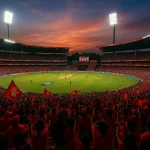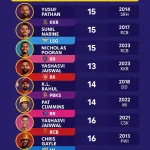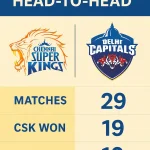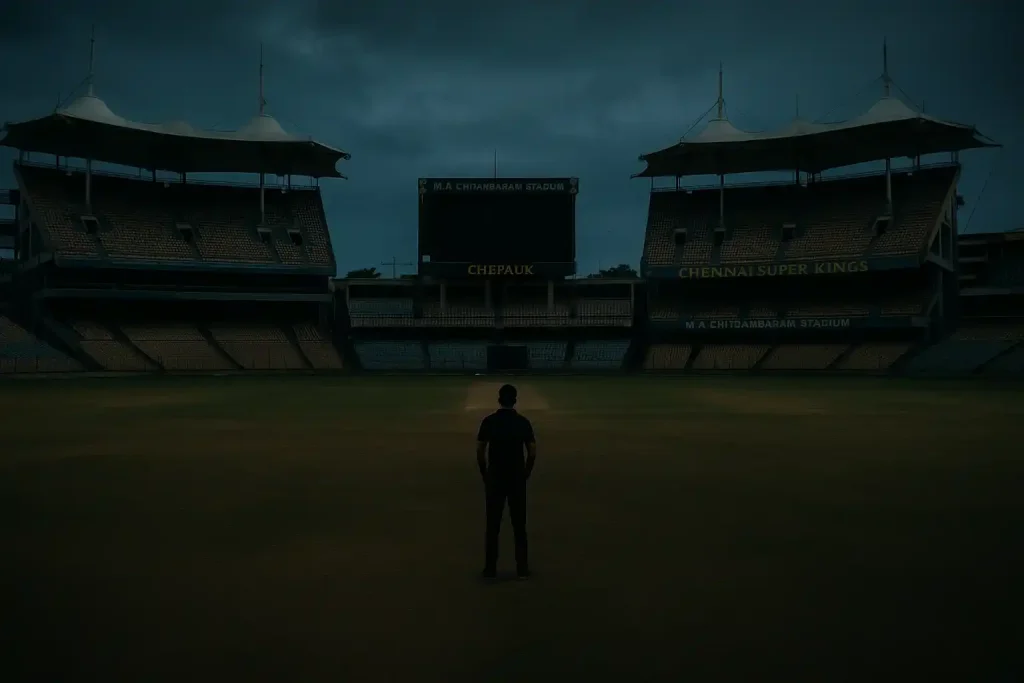
In India, cricket isn’t sport. It’s inheritance. And when it comes to Chennai Super Kings, it’s religion in yellow.
Packed stands. Deafening whistles. The thump of drums echoing through Chepauk. The moment that lion roars on the screen, even casual fans rise from their seats.
But in 2015, the roar was replaced with silence. The whistles, with stunned disbelief.
Because the unthinkable happened: CSK — a franchise that had come to define success and consistency in the IPL — was banned. Not docked points. Not fined. Banned. For two whole seasons.
So what tore the heart out of the IPL? Let’s rewind — not to judge, but to understand.
It Didn’t Begin with CSK — But It Got There Fast
The tremors started in May 2013. A handful of Rajasthan Royals players — Sreesanth, Chandila, and Chavan — were arrested in a late-night sting. Spot-fixing, they said. Cash for pre-decided outcomes. Cricket’s oldest ghost had returned.
Everyone hoped it was isolated. A one-off disgrace. But the rot hadn’t just touched the IPL — it had begun to feed on it.
Just weeks later, the headlines got worse. Gurunath Meiyappan, a top official of CSK — and son-in-law of then BCCI president N. Srinivasan — was arrested for betting and alleged links with bookies.
This wasn’t just another arrest. This was someone with backstage access to arguably the strongest team in the league. And it raised a damning question:
If the rot reached here — where else had it spread?
The “Enthusiast” Defense That Didn’t Work
In the days after Meiyappan’s arrest, there was a scramble to control the narrative.
The BCCI, incredibly, described him as a “cricket enthusiast.”
A fan. Not a functionary.
Never mind the fact that he’d been seen sitting beside Dhoni in dugouts, attending auctions, representing the franchise in official events. Photos and footage contradicted the claim instantly.
The public wasn’t buying it. And neither was the Supreme Court.
The court wasn’t just watching. It acted — and in January 2015, it appointed the Lodha Committee to investigate deeper.
What came out wasn’t pretty.
The Verdict That Shook the IPL
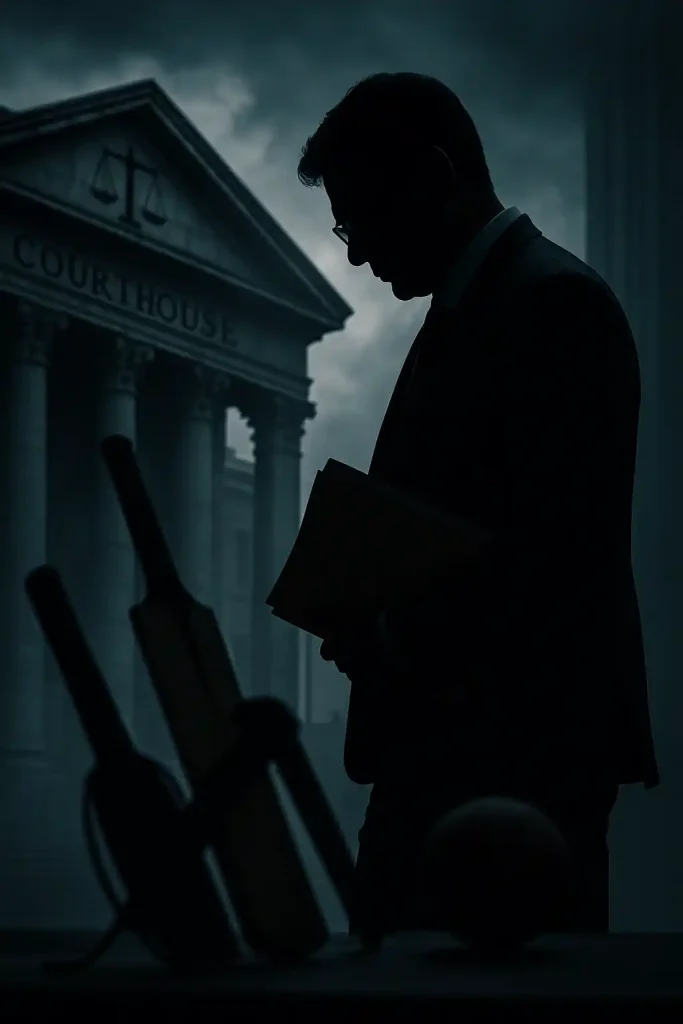
By July 2015, the Lodha Committee dropped the hammer.
Both Chennai Super Kings and Rajasthan Royals were banned for two IPL seasons (2016 and 2017). The reason? Their officials — Meiyappan for CSK, and Raj Kundra for RR — were found guilty of betting.
The logic was simple. Franchises can’t wash their hands if their top insiders break the rules. If an official cheats, the team pays.
Here’s how the Lodha Committee put it:
“A franchise owner acts through its officials. If those officials breach the integrity of the game, the franchise is not separate from that.”
It was cricket’s version of corporate liability. Painful, yes. But necessary.
The Numbers Behind the Fall
To understand what was lost, here’s a snapshot of CSK’s position before, during, and after the ban:
| Period | Highlights |
| 2010–2015 | 2 IPL titles, Dhoni-led dominance, highest brand equity |
| 2016–2017 | Suspended. Players dispersed. Brand value dropped significantly |
| 2018–2023 | Triumphant return. 3rd, 4th, and 5th IPL titles under Dhoni |
Fanbase? Never left.
Players? Scattered, but waited.
Legacy? Tarnished, but not toppled.
And What About Dhoni?
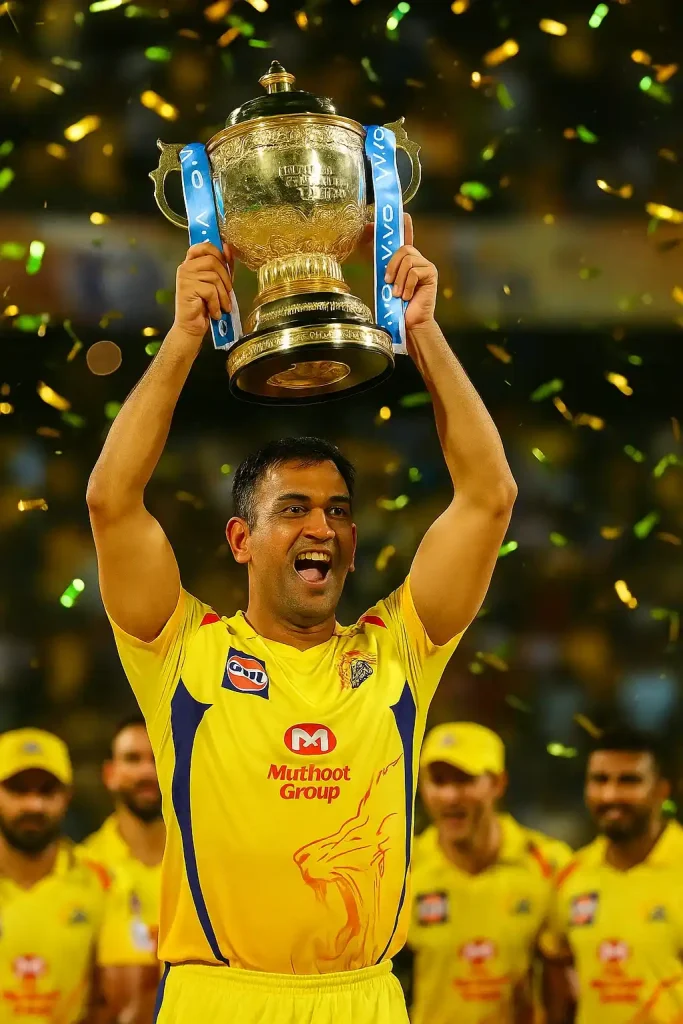
Let’s address the giant in the room.
MS Dhoni, CSK’s captain and India’s icon, was never charged. He wasn’t accused of wrongdoing. But he was captain during the storm, and yes, the silence from his side frustrated some.
Could he have said more? Possibly. Should he have known? Hard to say.
What we do know: when CSK returned in 2018, it was Dhoni who led them. And when they won that year, it wasn’t just redemption — it was resurrection.
No one had forgotten the fall. But with each six he launched into the night sky, fans forgave just a little more.
Did the Ban Change the IPL?
Here’s the paradox. For all the drama, the bans, the outrage — the system didn’t transform overnight.
Yes, team officials became more cautious. Vetting tightened. And franchises became warier of optics. But has Indian cricket fully cleaned house?
Not really.
Gambling apps still linger on the fringe. Backroom deals? Rumors persist. The IPL’s commercial engine runs too hot, too fast, for complete transparency.
What the CSK episode did, though, was set a line. A warning. That no matter how beloved the team, how powerful the people — the game will take precedence.
At least, sometimes.
What the Fans Remember
Ask any CSK fan about those lost years and they’ll say the same: “We never left.”
During the ban, they wore yellow anyway. They followed Dhoni to Rising Pune Supergiants, awkwardly cheering on a stand-in squad. But the soul wasn’t there.
And when the team returned — when that lion roared again in 2018 — it felt bigger than cricket. It was a homecoming.
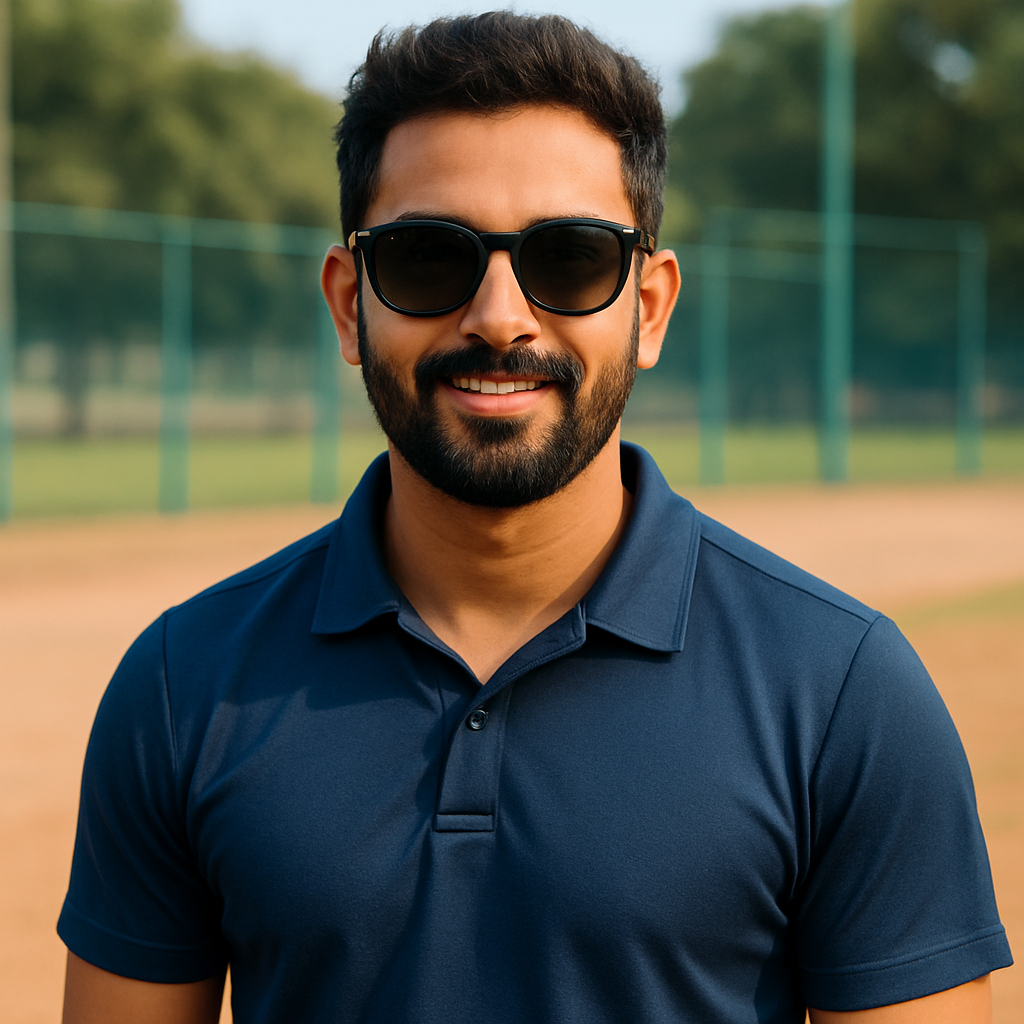
Meet Arjun Kushaan, a passionate cricket analyst at The Cricket24x7. From street matches in his childhood to competitive college tournaments, cricket has always been a central part of Arjun’s life. With a strong background in data analysis and a natural affinity for numbers, he brings a fresh, analytical lens to the game. At The Cricket24x7, Arjun blends his deep love for cricket with his data-driven approach to deliver detailed insights and well-rounded coverage for fans of the sport.

